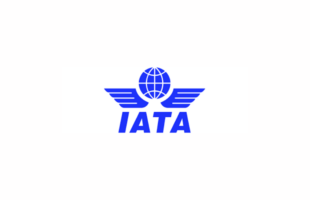Hit by the global recession and the drastic drop in transport demand, Singapore Airlines Ltd (SIA) had earlier in the year decommissioned 17 aircraft in the financial year starting in April, as the carrier prepared to face a “very difficult†2009. The airline also slashed routes, merged flights, cut fuel surcharges three times since September and reorganised its network in a bid to balance supply and demand requirements.
According to a SIA Cargo spokesperson, the airline’s latest operating statistics for June show that overall cargo traffic (measured in freight tonne kilometres) fell by 20.8 per cent, as system- wide cargo traffic has been severely impacted by the economic downturn.
“However, the drop in LTK was less than the reduction in system-wide cargo capacity of 22.3 per cent. As a result, cargo load factor (CLF) registered an improvement of 1.3 percentage points,†she said, adding that the modest rise in overall CLF is mainly attributable to better capacity management.
“CLF for East Asia declined slightly by 0.5 percentage points in June (yearon- year), as the market is still weak due to the ongoing economic downturn,†she added.
Based on data released by SIA Cargo on its website, the airline’s cargo load by route in the region was down 0.5 percentage point in East Asia and also down 1.5 percentage points in West Asia and Africa. Other regions like Americas were up 1.6 points, Europe up 3.6 points and Southwest Africa up by 2.4 points. The airline’s overall load factor was down 0.9 percentage points in June.
According to the International Air Transport Association (IATA), although the decline in global air cargo volume has leveled out, cargo traffic and yields are still under extreme pressure due to lower fuel surcharges, the H1N1 flu outbreak and other factors.
Stressing that the overriding concern for many airlines is excess capacity, IATA said: “More drastic capacity cuts on the cargo side could help stabilise yields, which may head to an eventual recovery on this front. Iata expects the aviation industry to lose US$9 billion this year.â€Â

No clear recovery signs
Asked what was SIA Cargo’s forecast of the air cargo industry till the end of this year, and also next year, the spokesperson said: “Although leading industry indicators suggest some stabilisation in the demand for air cargo in the months ahead, with small monthon- month improvements, demand remains uncertain with no clear signs of recovery.â€Â
Right now, the main products handled in and out of Singapore’s Changi Airport are electronics, auto & machinery, garments, perishables, pharmaceuticals & medical equipment, courier, live animals, flowers, and live tropical fish, among others.
Regarding major contributors to its revenue, the SIA Cargo spokesperson said: “Apart from Singapore, the major contributors to total revenue have always been China, Hong Kong, the US and Australia.â€Â
“China contributes around 10 per cent of (the airline’s) business,†she said, adding that about half the air cargo business was handled in the bellyhold of passenger aircraft while the other half was handled by freighters.
SIA Cargo has a fleet of 14 B747-400F, each of which can handle 110 tonnes and has a range of 8,245 kilometres. The airline’s bellyhold cargo is carried using A380 and A340-500, which can each provide 12 tonnes and 14 tonnes capacities, respectively. Other Boeing aircraft like the B747-400 can carry 13 tonnes, B 777-300 23 tonnes, B 777-200 17 tonnes, B 777-200ER 9 tonnes and B777-300ER 26 tonnes.
Second A380 service to Oz
Singapore Airlines (SIA), which already operates an A380 to Sy dney as well as on routes to London, Tokyo, Paris and Hong Kong, has introduced the A380 on its daily Singapore-Hong Kong service, effective July 9, 2009, replacing a B777-300ER used on the route.
SIA will introduce the A380 super jumbo on a second route to Australia this autumn. Effective 29 September, the super jumbo will operate daily between Singapore and Melbourne replacing a B747-400 on the route.
SIA Cargo, in support of Singapore’s National Heritage Board’s programme to enrich the local arts and cultural scene, said it will transport 150 valuable works of art from world-renowned museums in Antwerp.
The airline transported the exhibits, which were on display in Shanghai, to Singapore on June 28, 2009. It will then ship the exhibits from the Island Republic to Brussels when the exhibition ends in October this year.
Earlier this year, SIA Cargo started a weekly, westbound B747-400 freighter service to the Bangladeshi capital of Dhaka, effective April 3. The routing for the service is Singapore-Dhaka-Sharjah- Brussels. This new capacity to Dhaka is in addition to the bellyhold capacity available on SIA’s existing passenger service to the city.
SATS
SIA Cargo uses Singapore Airport Terminal Services (SATS) Airfreight Terminal 5 & 6, which are fully dedicated to SIA Cargo’s export, import and transshipment activities. The combined processing area is about 94,000 sq metres with a combined handling capacity of 1.35 million tonnes a year.





